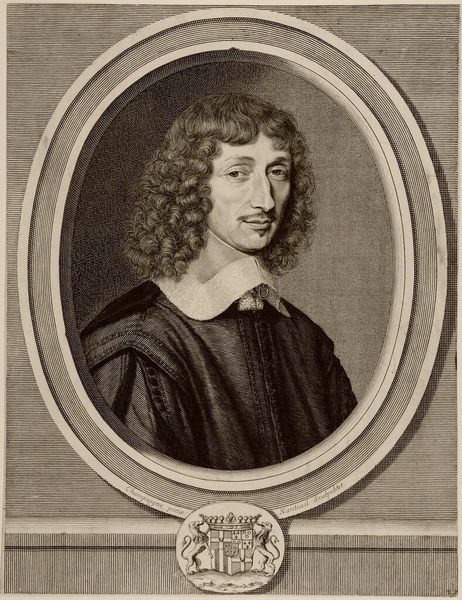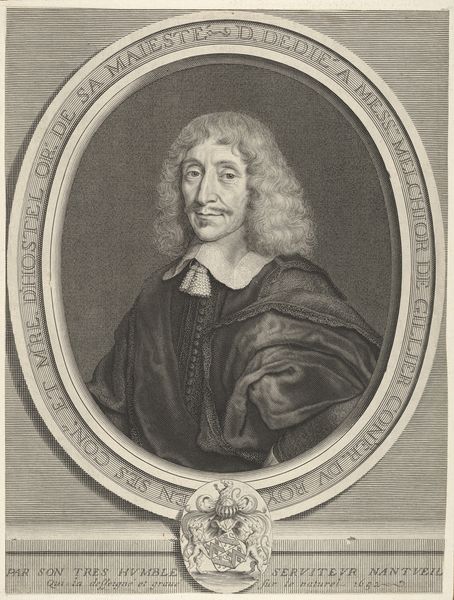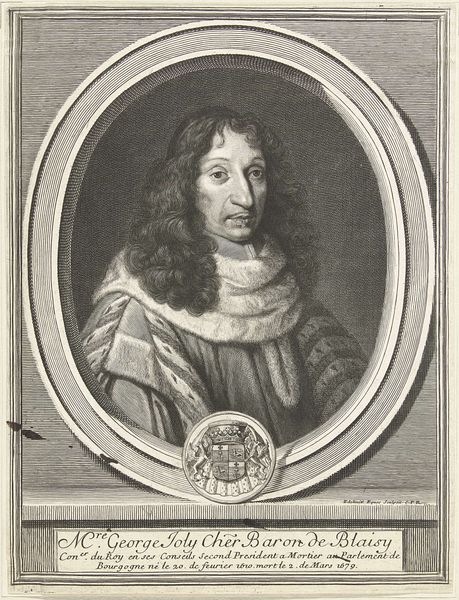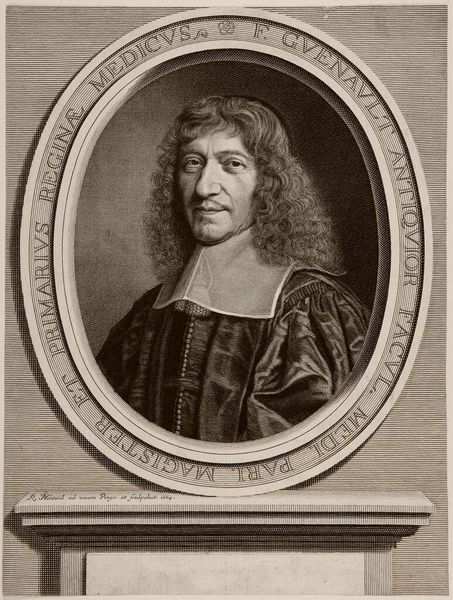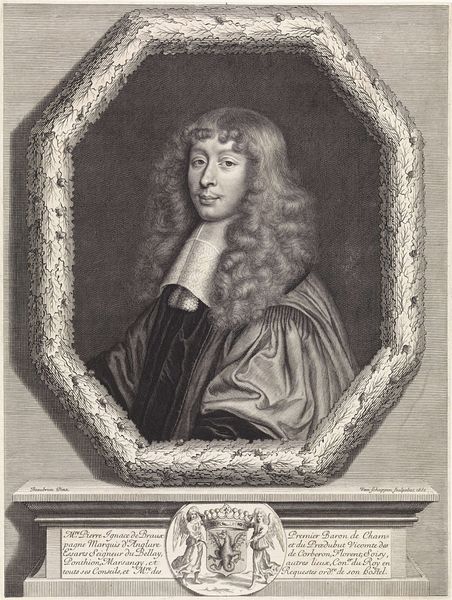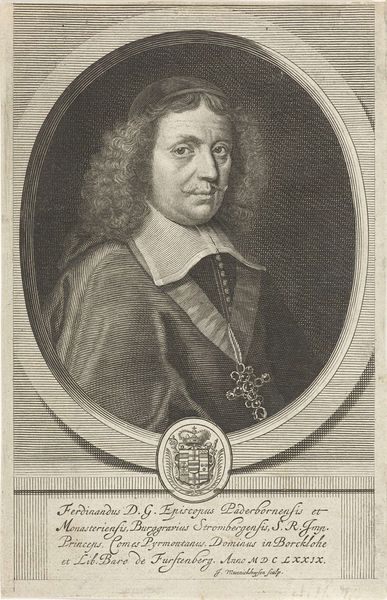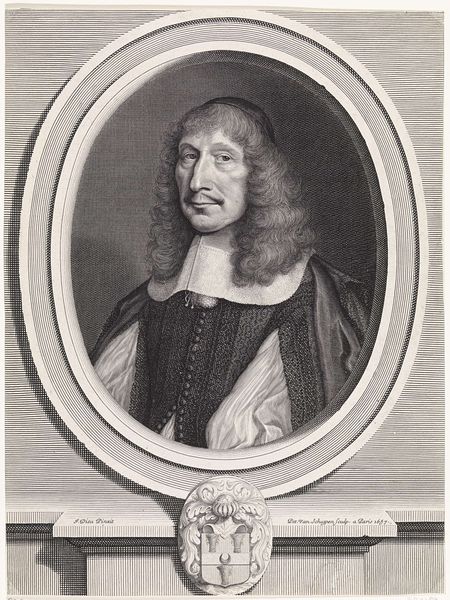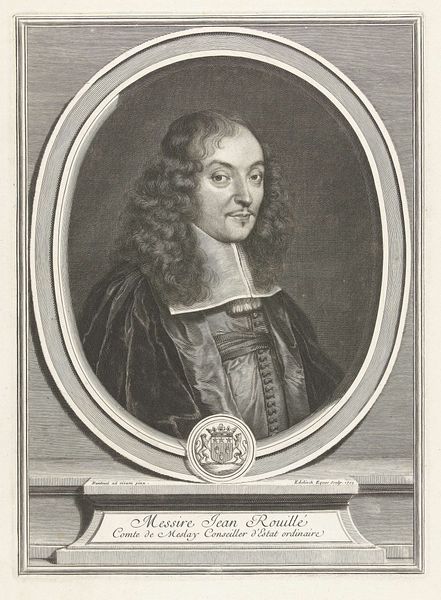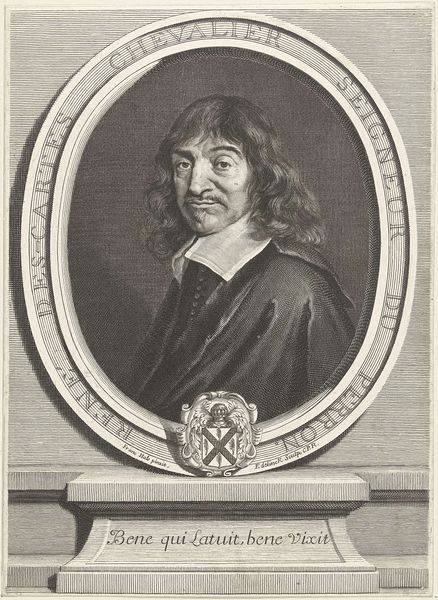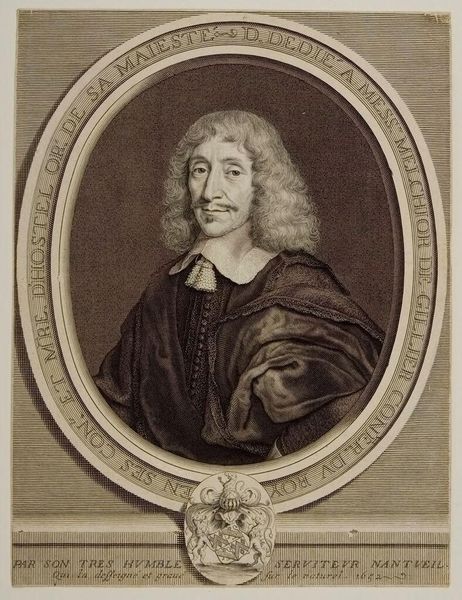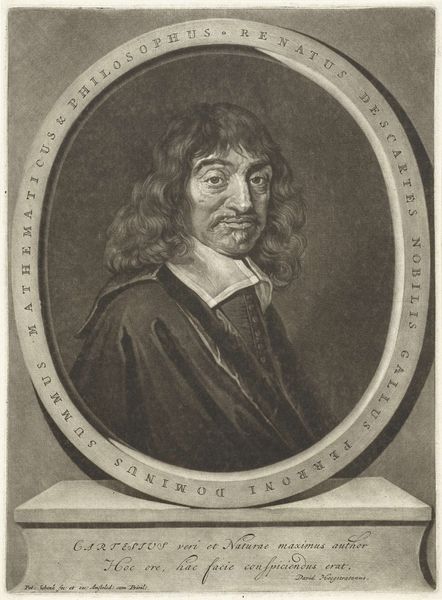
print, engraving
#
portrait
#
baroque
# print
#
old engraving style
#
historical photography
#
history-painting
#
engraving
Dimensions: height 326 mm, width 250 mm
Copyright: Rijks Museum: Open Domain
Curator: This engraving, dating from 1654, is a portrait of Henri de Guénégaud by Robert Nanteuil. Editor: It has such an intense gaze, doesn't it? Almost unnerving, yet elegant because of the Baroque style framing and the fine detail in the face and clothing. Curator: Absolutely. Nanteuil was renowned for his mastery of the burin, the engraving tool, achieving a tonal range usually associated with painting. Portraits like this became crucial cultural artifacts. Consider how they reinforced notions of power and nobility, circulating visual codes of identity throughout society. Editor: Yes, portraits as tools for social construction. Guénégaud, as Secretary of State to Louis XIV, undoubtedly understood that visual language. That’s power encoded in the details: the precise curls, the expensive lace, the suggestion of tailored fabrics. Curator: Look closer, though, at that heraldic shield below. It represents lineage, ancestry, and the accumulated privileges that define Guénégaud’s place in society. These symbols acted as constant reminders of social order. This image, in a way, encapsulates a very specific, perhaps now vanished, world-view. Editor: Vanished, perhaps, but the echoes of it resonate. We can analyze how this carefully constructed image promotes very particular ideals about gender, class, and governance. The soft but unwavering light, almost ethereal, bestowing legitimacy. It's propaganda of a subtle, sophisticated kind. Curator: The emotional effect it evokes, though, is interesting. Does it invite admiration or critique? The precision pulls us in. But what emotions do we, as modern viewers, project onto it, shaped by our own social positions and awareness? Editor: I'm struck by the contrast: the controlled pose versus what feels like an implied assertion of inherent right to authority. It reveals how historical representations function to uphold ideologies that are perpetually open to challenge. Curator: I'm so moved to appreciate that this print gives an image of how historical identity, through skilled artistry, could perpetuate certain myths and expectations of nobility through very powerful image archetypes. Editor: It shows us how an individual, represented with exceptional skill, is embedded within systems of meaning that shape perceptions and, ultimately, wield influence even today.
Comments
No comments
Be the first to comment and join the conversation on the ultimate creative platform.

